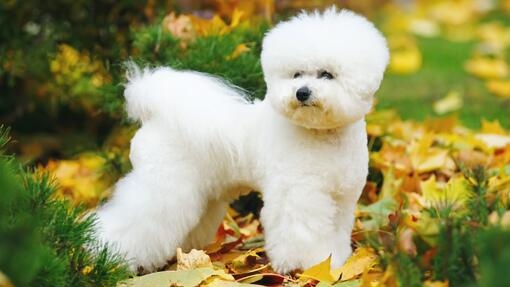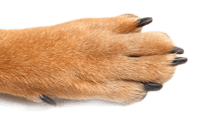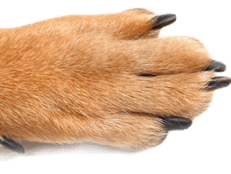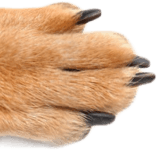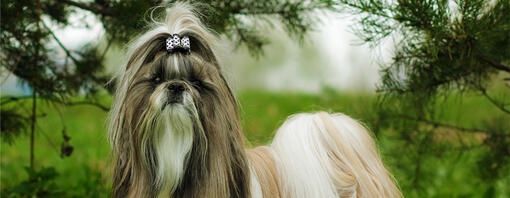
How much your dog will shed can be an important factor when selecting your canine companion. Many potential dog owners don’t want a lot of dog hair around their home – especially if they suffer from allergies.
While no dog is allergen-free, if you’re looking for a small dog that doesn’t shed, much hair, breeds like Shih Tzus and Yorkshire Terriers can be ideal. Keep on reading to discover more about these breeds and if they could be the ideal companion for you and follow our practical advice for a low allergen home environment.
Why Choose Small Dogs That Don’t Shed?
There are lots of great reasons to choose a small low shedding dog. For starters, you'll spend less time cleaning up hair around the house and off your clothes. Plus, if you have allergies, small low shedding breeds can be much quicker to groom, meaning less sneezing and wheezing. Dogs that don’t shed – especially those with long coats or curly coats - will still need regular thorough grooming, and some will benefit from the skills of a professional groomer to keep their constantly growing coat in check.
Top Low and Non-Shedding Small Dog Breeds
Below we will explore some of the most popular breeds which could be suitable for allergy sufferers.
Shih Tzu
The Shih Tzu is recognisable by their long coats, which surprisingly, hardly shed. This breed has hair that continuously grows in a way that is very similar to human hair, and while this does mean that twice weekly grooming is necessary to maintain their coat’s condition and keep them matt free, you’ll find that their hair sheds in small clumps, making it easier to clean up. While the long flowing coat of the Shih Tzu is stunning, most pet owners will keep them trimmed in a puppy clip which is a lot easier to keep clean, tangle-free and in good condition.
Bichon Frise
With their fluffy white coat and cheerful attitude, the Bichon Frise is a popular choice for those with allergies. Their curly coats hardly shed and help to retain their dander, thereby minimising the allergens being spread around the home. However, to maintain this beautiful coat and to prevent matting, you need to ensure you groom them thoroughly at least twice a week and have a professional trim every couple of months. If you don’t want to have the expense of a professional, you could take lessons on how to clip them yourself.
Havanese
The Havanese has an allergy-friendly coat that doesn't shed much. However, as a double-coated breed prone to matting, they have coats that can be difficult to maintain and need daily grooming down to the skin to keep them tangle-free and healthy. Most pet owners will keep them in a short puppy clip which makes coat-care easier. Despite their high coat care needs, their playful nature and intelligence makes them a great canine companion for owners who like a dog who is strongly bonded to them - although they are rare and most breeders will have a long waiting list.
Maltese
Distinguished by its luxurious white coat, Maltese dogs are minimal shedders. They require grooming every other day in order to prevent their long, straight hair from tangling up. However, with their quiet friendly personalities, they are a great choice for first time owners and those who want an easy to live with dog. Like many small companion breeds however they do not cope well with being left alone.
Poodle (Toy and Miniature)
Poodles of all sizes are often recognised for their hypoallergenic qualities – and the Toy and Miniature varieties are all under 15” tall. Their tightly curled coat is non-shedding and traps most of their dander, however, they require a consistent and thorough grooming regimen to keep their coat healthy and clean. As their coat doesn’t shed and just keeps growing, as well as daily coat care, Poodles either need professional clipping every six weeks or an owner who takes the time to learn how to do it themselves, stocks up on all the equipment, and has the enthusiasm to do it! Poodles are intelligent and easy to train, making them perfect for first-time owners and more experienced owners who would like to try their hand at various dog sports alike.
Yorkshire Terrier
Despite their long, beautiful hair, Yorkshire Terriers hardly shed, however, their fine, silky coat does require daily maintenance to prevent any tangling. As with many of the long-coated breeds however, few pet owners keep their Yorkies in full coat, as while they may look glamorous, these are very much ‘real’ terriers who love nothing more than diving into everything! A short puppy clip means they are far easier to groom. Their small size is perfect for those living in smaller homes but while their size makes them 'flat friendly', their noise levels rarely do!
Grooming Tips for Low-Shedding Small Dogs
Consistent grooming is essential for all dogs, even those that shed very little. Establishing a regular grooming routine plays a key role in maintaining your dog’s overall health and wellbeing. This routine not only helps remove loose hair and dander and keeps the coat in good condition, but it also gives you the chance to check your dog for injuries, cuts, sore spots etc. For breeds that need regular clipping of hand stripping, professional grooming from an early age will be required.
If you are enthusiastic about grooming, you can learn how to clip or strip your dog yourself by asking your groomer to give you some training. It will require specialist tools which will require maintaining but it can be really rewarding.
It's important to choose grooming tools carefully to ensure you are using the most appropriate tools for your dog’s coat and skin type. What works for one can damage the coat of another. Ask your dog’s breeders what they recommend or consult a reputable, qualified groomer.
Bathing is another part of the grooming process, but how often it should be done depends largely on the breed, the individual dog and your own preferences. For many low-shedding dogs like the curly Poodles and Bichons or the double-coated Havanese, frequent bathing without the proper technique can lead to matting either from not drying them correctly or from drying out the coat.
Each breed has its own specific coat care requirements, and it is important to find out about these either from your dog’s breeder or a professional groomer. Beyond the practical benefits, grooming your dog is a great way to bond with them and strengthen your relationship.
Managing Allergies with a Low-Shedding Dog
Keep in mind that no dog is truly hypoallergenic and so just choosing a low-shedding dog isn’t going to guarantee you won’t have a reaction to them.
If you or a family member has allergies, it's important to take additional steps to reduce symptoms. Using air purifiers, maintaining a strict household cleaning routine, and following medical advice, such as taking prescribed allergy medications can all make a difference. If one family member has allergies, a helpful strategy is to establish a dog-free zone in your home, such as their bedroom, to create a space where allergens are minimised.
Good hygiene is also essential. Simple habits like washing your hands after playing with or handling your dog can help reduce the risk of allergic reactions. Because different breeds can affect individuals in different ways, it’s wise to spend time with adult dogs of the breed you're considering in their own home before bringing a puppy into your family. This applies to all members of your household, especially children, as it gives you a better idea of how your allergies might respond.
Consulting your GP is an important step, particularly if you're unsure how to manage symptoms. If grooming your dog at home triggers your allergies, consider using a professional grooming service. However, it's important to note that isolating or locking the dog away to avoid allergic reactions is not a healthy or sustainable solution. In fact, this approach will strain the bond between dog and owner and is a common reason dogs are surrendered to rescue centres.
If you or a family member have severe allergies, it might well be that no matter how much you want a dog, it is not going to be fair on them – or healthy for you.
Choosing the Right Small Dog Breed for You
Feeling undecided about which small dog breed to go for? Well, it's important to make sure you’re taking into consideration your potential breed’s characteristics and whether they match up with your lifestyle. You should consider the small dog breed’s energy levels, what their grooming requirements are, and how much training and exercise they will need. It's important to add that these are only a very small selection of non-shedding small dogs – and are mostly companion breeds only so there are many more you could consider. We recommend using our Dog Breed Selector to help you find the right dog for you.


